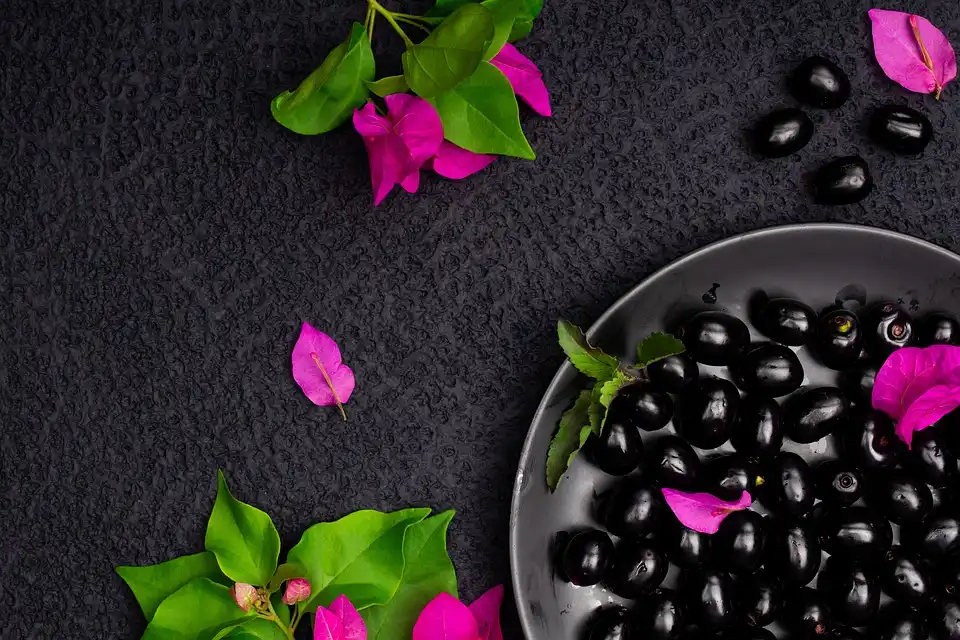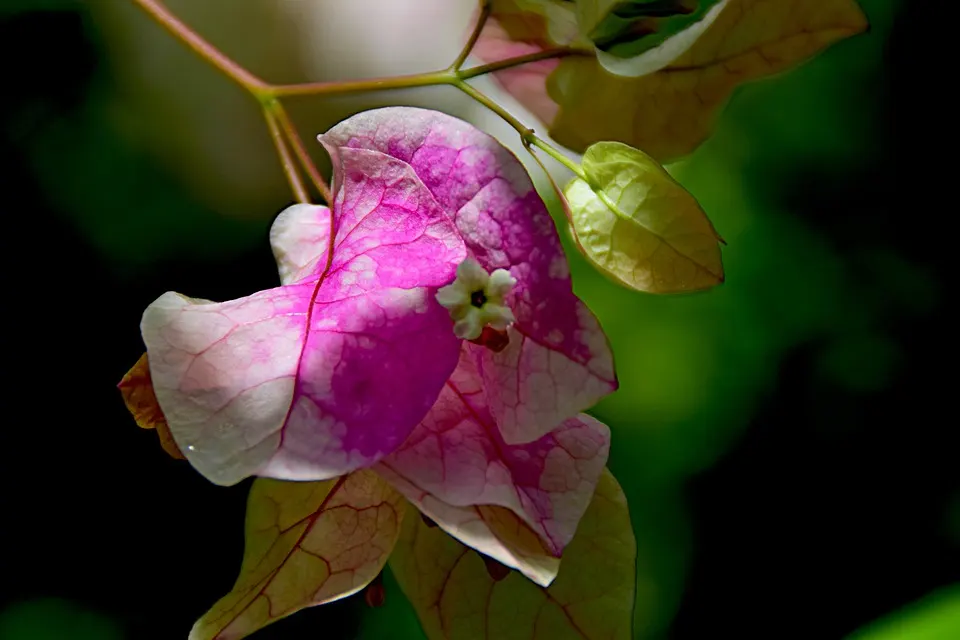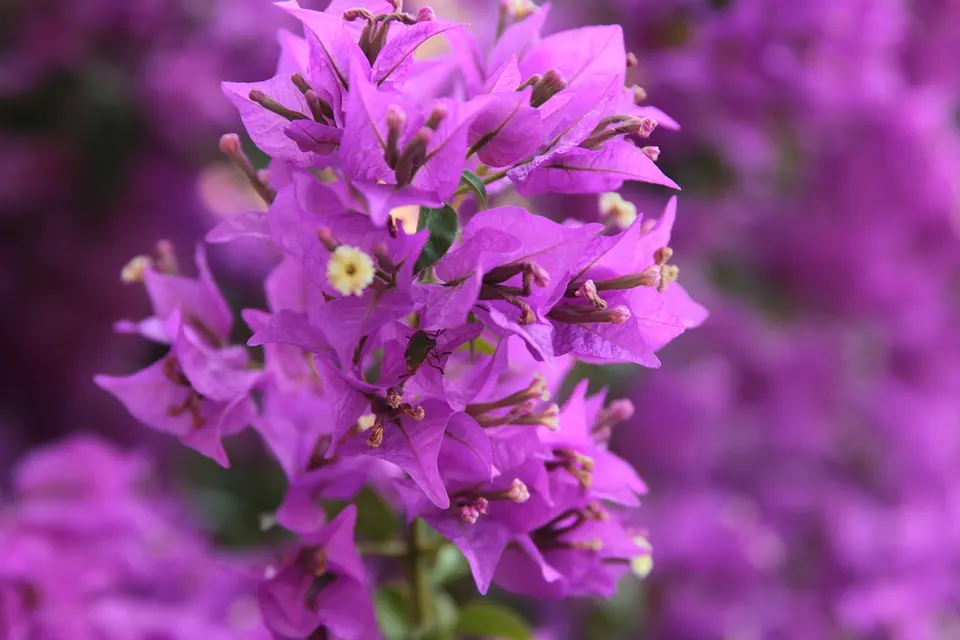How to Get the Best out of Bougainvilleas’ Blooming Season
A bougainvillea or two is one of the best ways to brighten up your garden. Featuring a wide array of colors and numerous growing styles, including charming bonsais, the versatility of bougainvilleas knows no bounds. Easily the most striking parts of the bougainvillea are its delicate, vibrant bracts. These paper-thin pops of color add so much character to their surroundings.
But the function of the bracts, as beautiful as they are, goes far beyond being structural showpieces in your garden. The true flowers of the bougainvillea plant, the light, cream-colored flowers blooming shyly from the center of the bract formation, are very small. They also don’t grow in clusters like other small flowers might. Therefore, on their own, they fail to attract the attention of pollinators. The plant adapted to form bright, beautiful, vibrant bracts to offset this rather significant issue. These are what attract hummingbirds, bees, and butterflies to harvest and spread vital pollen from your bougainvilleas.
Because of this crucial functionality, it’s awful when your bougainvillea refuses to bloom. Apart from looking wildly underwhelming without flowers and bracts, these trees and shrubs cannot propagate if they don’t bloom. Luckily, we know a few things about bougainvilleas and have put together this piece to explain possible reasons why your bougainvillea is sulking in the corner of your garden. We even have some tips and tricks to put a spring back in your bougainvilleas step and get it blooming as if it’s the last time it ever will. But just to be clear, if you look after your bougainvillea well, it should showcase appreciation in abundance and bless you with the psychedelic display of rich and lively colors you’ve come to expect.
The Difference Between Thriving and Surviving
All organisms respond the same: immortality or reproduction when it comes to survival. If an organism’s environment is not nurturing or sufficiently favorable, it will choose immortality. If an organism is in a place where its needs are met, it will choose reproduction. Plants are no different in this respect.
These functions, immortality, and reproduction, are present in all biological life. In plants, these systems are easy to understand. The core means of survival in your bougainvillea are its roots and its leaves. The roots provide two crucial functions; they anchor the plant down, keeping it stable and allowing it to grow strong, and they provide the plant with essential nutrients. Roots feed the plan by absorbing nutrient matter from the soil they are rooted in. The leaves also provide essential functions.
Green leaves containing chlorophyll are responsible for photosynthesis. This is also a vital function in terms of the plant’s survival. Without photosynthesis, there is no way for a plant to produce carbohydrates necessary for growth and sustaining life. Apart from the detrimental consequences that a lack of photosynthesis would have for Earth’s entire delicately balanced ecosystem, your plant will die without photosynthesis.
Once your bougainvillea’s basic needs are met, it will favor reproduction. Reproduction is far more than just two organisms sharing elements to create a new generation of organisms. Reproduction is a data transfer. All organisms, plants included, amass vast amounts of data during their lifespans. Plants, like humans, are comprised of DNA. Deoxyribonucleic Acid is where this data is stored. The data stored in DNA are all the necessary instructions the next generation of plants need to carry out vital processes. Each organism’s instructions are slightly different but center around immortality and reproduction.
Bracts and flowers are both the bougainvilleas’ means toward successful reproduction. So basically, if your bougainvillea is flowering, it means the environment it is in is perfectly suitable. The plant is no longer diverting all its energy into the expansion and strengthening of root systems and the production of leaves. It feels safe and secure and is ready to pass on all the beautiful knowledge about surviving and thriving to its next generation.
Why is Your Bougainvillea Not Blooming?
All plants have needs that ought to be met to thrive. Therefore, there are several reasons your bougainvillea may not be as happy as it could be where it is. Luckily, most of these can be rectified with the right knowledge. Just as the bougainvillea yearns to pass its knowledge to the next generation of plants, we want nothing more than to carry our knowledge over to you.
Damp Soil
Bougainvilleas enjoy warm, dry climates. This also means they prefer soils that drain easily and don’t get bogged down with water. For plants like bougainvillea, soils that retain water are stressful because the plant’s roots are permanently lying in the water, and bougainvilleas don’t like wet feet. Waterlogged soil is an issue because it means the roots have to work harder to get the nutrients the plant needs. It also provides the perfect conditions for ailments like root rot to occur.
Bougainvilleas require water like most other plants, but they do better in soils that have a chance to dry out properly between watering. Soils with clay-like properties are therefore unsuitable. If your soil does not drain well, consider potting your bougainvillea. The soil in a pot is far easier to control than in a garden bed. While there are ways to condition your garden beds to be more suitable places for plants like bougainvillea, these often require copious amounts of specially formulated soils to be mixed in, which can be an expensive task.
Not Enough Sun
Sun is essential for plants to thrive. We discussed the importance of photosynthesis above; this is achieved through sunlight absorbed through the bougainvilleas leaves. If the bougainvillea is planted in the shade, the photosynthesis aspect of the plant’s needs won’t be met, and it will choose immortality over reproduction. In this case, more energy will be directed to the leaf systems of the bougainvillea to try and get the leaves to spread further or grow taller in search of better sun.
To increase your plant’s overall happiness and promote flowering, make sure your bougainvillea is planted somewhere it receives at least six hours of direct sunlight during the day. Potted bougainvilleas and bonsais are easier to manage in terms of sunlight because they are more easily moved than bougainvilleas planted straight into the ground.
Too Much Water
Overwatering your bougainvillea has the same harmful effects as inadequate drainage does. Anyone who has ever been asked to take care of a friend’s plant knows the stress of trying to keep the delicate things from dying. Instead of facing the infinite wrath of our dear friends upon their return, we’d rather give the plant too much water because then, at least, it definitely won’t die. Or so we like to believe.
Sadly, plants are not like pets; you cant give them a surplus of food and expect them to take it slow and only take in what they need. Their roots will try to absorb every ounce of water you give them. Unless the soil you use drains exceptionally well, giving your bougainvillea too much water will result in waterlogging its roots, promoting root rot, and forcing the plant to favor immortality over reproduction. The plant might adapt its root system over time to combat the excessive watering so that it can learn to thrive in a new condition. Still, the most likely outcome is that your bougainvillea will spend the rest of its existence being far too stressed to want to flower and spread its knowledge.
Remember, bougainvilleas like warmer, drier tropical climates. Your bougainvillea will be happier with less water than with far too much. Experts in growing flowering plants suggest that for optimal results, you should only water bougainvilleas once their leaves start wilting. While this may be a little extreme for most enthusiasts to do, the takeaway is that your bougainvillea can and will still thrive with less water. These stunning plants are as hardy as they are beautiful.
In their preferred hot and dry natural environment in South America, bougainvilleas flower best due to a process called water stress. In this almost desert-like landscape, natural watering is very scarce. This scarcity is different from other deficiencies and provokes a different type of response from the plant. As we mentioned earlier, plants usually respond to stress with immortality; they divert all energy into leaf and root expansion to ensure their own survival.
Water is a far more precious resource, though, and in its natural dry surroundings, the bougainvillea responds in a rather peculiar way when deprived of water for too long. The plant goes into survival mode, but at the first hint of water, it immediately favors the proliferation of its kind and produces the most vibrant bracts in abundance. Bougainvilleas do this as a sort of swan song. The plant doesn’t know when it will receive water again, and it knows that it is dependant on water for survival. Water isn’t like sunlight. In the dry southern reaches of the Americas, expanding root systems aren’t likely to reveal better access to water. The plant knows that it is in crisis and that this might be its last chance to flower. So it uses every ounce of its nutrients to produce the most beautiful bracts it ever has in this final show-stopping attempt at attracting pollinators.
Nurseries use this natural process and force bougainvilleas to flower vibrantly by withholding water for long periods. Just as the plant is about to start dying, water forces it to choose what it believes to be one final attempt at reproduction.
Too Much Fertilizer
Fertilizer is brilliant for encouraging thick, lush foliage growth. Unfortunately, this often happens a the expense of flowers. Nitrogen is one of the most common ingredients in fertilizer. Nitrogen promotes the growth of green foliage and stems, but nitrogen on its own won’t encourage blooming.
The best fertilizer for bougainvilleas is a healthy combination of nitrogen, phosphorous, and potassium (NPK). However, sometimes even these are too heavy on nitrogen for your bougainvilleas. We suggest using a half-strength all-purpose NPK early in the spring not to overwhelm the plant with nitrogen.
For best results, just keep an eye on your bougainvilleas’ growth and flowering patterns. If you see it’s the flowering season, but you have no flowers, scale back your fertilizer use, let the plant adapt, and see how it goes. With plants, sometimes the best you can do is play it by ear.
Bougainvilleas do, however, tend to thrive when they’re left alone for long periods, so don’t be afraid to neglect your plant every now and then; you might just be giving it exactly what it wants.
As a general rule, bougainvilleas planted directly in your garden should not need fertilizer at all. As long as your soil is the right consistency and promotes good drainage, your bougainvillea should thrive.
Unsuitable Temperature
Given how much emphasis we’ve put on words like dry and hot when it comes to bougainvillea care, it should not come as a surprise that temperature is an essential factor in healthy bougainvillea blooming. Yes, bougainvillea is a hardy plant, but they do better in more extreme heat and dry spells. Cold and wet weather extremes are not suitable for bougainvilleas to thrive in.
Think of Mediterranean destinations like Greece. The quintessential Greek island village is full of rustic white walls, vibrant blue window shutters and doors, and almost luminescent magenta bougainvilleas. They creep up the walls creating a stark contrast with otherwise usually bare walls. These plants seem always to be blooming. While they are not perennial bloomers, bougainvilleas do better in places like these villages. They don’t get overwatered, they grow where and how they want to grow, and they bask in the sunlight for many hours of the day. The key here is neglect. Bougainvilleas thrive where it’s sunny and warm and where they are not fussed over.
Final Word
Bougainvilleas are hardy and determined plants. But being hardy only ensure your plant’s survival, not that it will thrive. To flower in preparation for reproduction, all of the plant’s core needs must be met. It needs water, but not too much, and it’s easier to promote flowering by withholding water for extended periods. Your bougainvillea also needs nutrients, but not an overload of nitrogen, so don’t be too liberal with fertilizers. The one thing your bougainvillea needs plenty of, though, is sunshine. So make sure it’s somewhere sunny, relatively dry, and not saturated with nitrogen, and your bougainvillea should flower with reckless abandon every flowering season.







